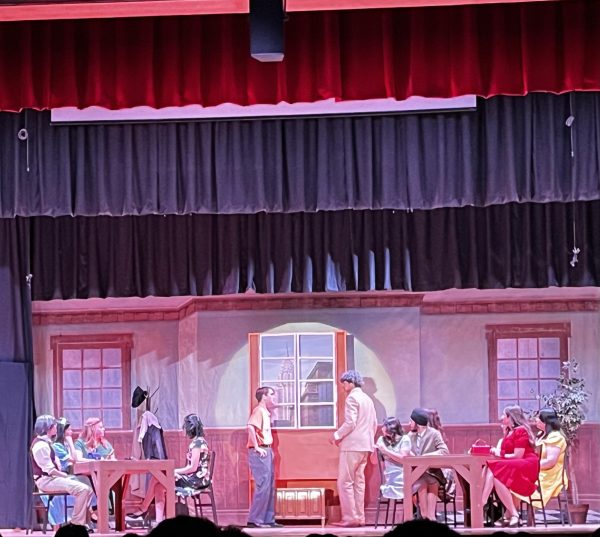New System SyncGrade Set to Replace DOE Gradebook After Ban on Pupilpath.
For as long as we’ve known, Pupilpath has been the automatic grading system that Francis Lewis High School has turned to for years. It had easy access to all the information that allowed both students and teachers to keep track of assignments and grades. However, that all changed after a breach in January 2022.
Due to this breach, about 820,000 current and former students’ private information were affected. The Department of Education (DOE) deemed it to be such a severe invasion of students’ privacy that it placed a citywide ban on the use of Pupilpath. The DOE hoped to solve this problem by creating the DOE Gradebook as a replacement, but this didn’t pan out the way teachers and administrators at Francis Lewis High School hoped.
“Some of the problems that were happening at the beginning were things like people couldn’t even log into [the DOE Gradebook.] Something as simple as that,” Principal Dr. Marmor said. “Once people were able to log into it, a lot of the times teachers were having a lot of what we call lag. For instance, they would pull up a class and it would take about two or three minutes just to open it, and then once it opened it was very slow and sluggish putting the grades into it.”
Teachers were only given access to the grade book two days before the start of the school year, meaning they not only had to get accustomed to their new students, but they also had to adjust to an entirely new grading system. Even after some teachers were finally able to put in grades, there were reports of grades disappearing all together.
“I found that the gradebook wasn’t very user friendly, and I feel like we didn’t really have a lot of time to get situated with it,” Dana Grskovic, an English teacher and SO advisor said. “So even if we could have had a better working relationship with it, there’s just not a lot of time in our day to do that.”
The DOE Gradebook was not just a nightmare for faculty, but for students as well. Although it was accessible for teacher-use, it was announced that it would not be ready for student use until mid-October. During this time, teachers expressed their concerns on whether students were going to be able to keep up with their work while not having access to grades.
“I think in the long run, kids not being able to keep up with their progress could be detrimental because you start to not care,” Grskovic said. “You go from not caring, to panicking when you find out, whereas before you had the ability to see what’s missing. You could manage your time better because you knew what you needed to keep up on, and now it’s just kind of like well good luck to you.”
Dr. Marmor stated that he saw more flaws with the DOE Gradebook, which led him to conclude that “this gradebook is not ready,” and dropped it. Dr. Marmor has been trying to find another gradebook that will work better for the school. In order to prevent students from being completely in the dark when it comes to their grades, he recommended the temporary use of the Google Classroom Gradebook.
“What I told the teachers is this: for now, while we don’t have a gradebook, make sure you keep your grades some place easy,” Marmor said. “I did not mandate that they use Google Classroom Gradebook, but that is the easiest place to do it, so I did recommend that. Now why? Because the product that we are going to be using is going to synchronize with Google Classroom, so once we get the product up and running, everything that they put in Google will automatically transfer over. They won’t have to type it in, they won‘t have to redo it, it will automatically synchronize.”
According to Ms. Grskovic, using Google Classroom as a gradebook was not that difficult for her and many of her peers, mostly because a lot of the teachers got very familiar with Google Classroom during the pandemic. Her main concern now is trying to be consistent with uploading students’ grades.
“I try to get everything in on time, cause it’s really the only thing you guys have to keep track of what you’re missing,” Grskovic said.
Despite teachers’ best efforts to efficiently upload their grades onto Google Classroom, some students still feel a bit in the dark regarding their average given the inconsistency of grading systems.
“I think a lot of teachers are doing good, but then there’s the teachers that don’t use Google Classroom … and it just feels very confusing,” Isabella Durso, a junior at Francis Lewis, said.
Leah Pakan, a senior, agreed that her grades were impacted due to the changes with grading systems.
“I can definitely say that I am slacking off a little bit more this year because I’m not as active in my grades,” Pakan, said. “So because I don’t see my grades as much, I don’t care as much… like I don’t have a definitive, oh, this is where I stand, because in my head, Google Classroom is not that accurate. Honestly, as long as I know exactly what my average is in the class, I’ll be okay with it.”
Dr. Marmor stated that he is currently considering a grading system called SyncGrade. Marmor described it as a product that is “not perfect,” but is something that “will work for us and provide everything that we need in regards to viewing grades, parent contact, and easy access for teachers.”
“We are extremely close to getting the integrated product,” Marmor mentioned. “What we are trying to do does not exist in the city right now, we would be the only school in New York. After we do it I am sure hundreds of other schools are gonna do it but we are the ones right now who are making it happen.”
The only obstacle now is getting SyncGrade up and running. It took Dr. Marmor a while to get it approved by the Department of Education, and now that they finally have, programmers and others are working tirelessly to try to get the product to integrate with Google.
“Yes it’s going to happen, I literally this morning was told that it should be any minute and so what I’m basically saying to you is that by the time you write this story, the integration and the gradebook should be completed,” Marmor said. “I also might be eating these words if you write this story quick and in the next three or four days I don’t get this accomplished, like I said I might look silly… but I do believe that soon, this is all over, we have a functional gradebook.”
This interview was conducted sometime late October and we still have no word on whether or not the product is ready.
“I just keep hearing that we’re gonna get one sometime soon and each time that they set a date, it never actually happens, so I kind of just ignore it,” Durso stated. “I feel like we kind of need to get a move on it because, especially for juniors and seniors, this is such an important year for us. We’re trying to apply to college or trying to look good for colleges, and we really have no idea and [this] just kind of adds more stress to it.”
Although there seems to be some delay, SyncGrade is currently on the fast track to becoming ready for use and one of Dr. Marmor’s first priorities, leaving students anticipating its arrival. However, it has become clear that SyncGrade is not a long term option. One day we might be forced to return to using the DOE Gradebook.
“I don’t think that we are going to have a choice,” Marmor said. “ I think one day, I don’t know when, but I believe one day the Department of Education is not going to give people the option, so my answer is, we’re going to stay on a useful product until we are forced not to.”







